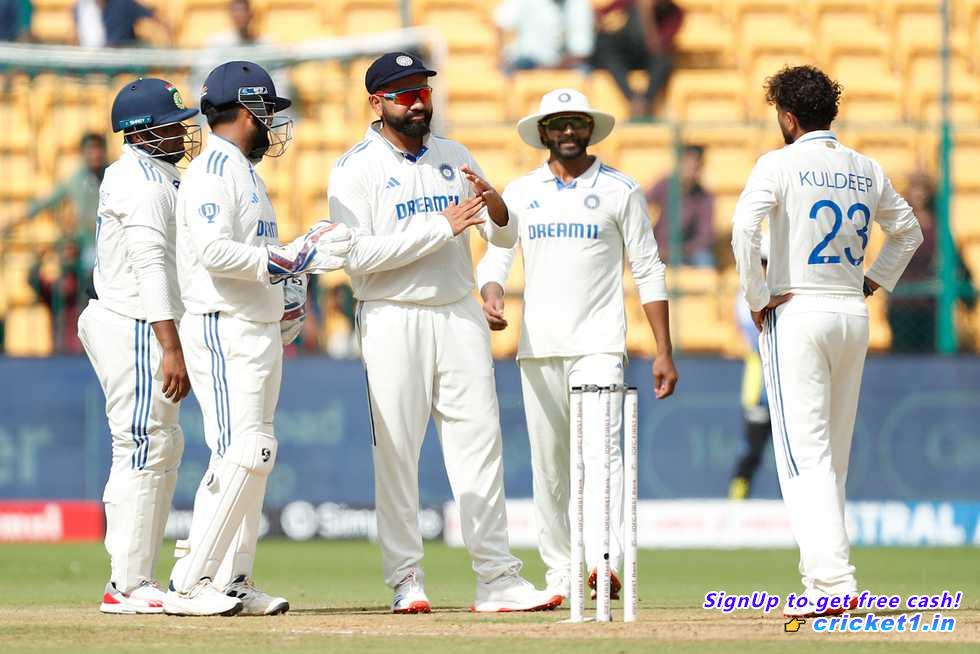
In an unexpected turn of events, New Zealand has managed to secure a remarkable victory on Indian soil, leaving the hosts grappling with multiple challenges. The recent Test match in Bengaluru marked a pivotal moment in New Zealand’s cricketing history—one that took 36 years to manifest on Indian turf. India’s renowned offspinner, R Ashwin, found himself in uncharted territory as he was subjected to an onslaught at nearly six runs an over, an unusual sight in a Test match in India. Notably, during New Zealand’s first innings, Ashwin endured his most expensive over in Test cricket, conceding 20 runs. By the fifth day, with India defending a meager 107 runs, Ashwin became the last resort for captain Rohit Sharma, who later quipped about discussing possible rain directions with his premier spinner on the final day.
New Zealand’s win is particularly significant because they managed to neutralize India’s greatest strength. The Indian spin trio, typically an indomitable force, only managed to secure four maiden overs throughout the match, underscoring the lack of control resulting from their first-innings collapse. Such a win is a rare feat for New Zealand, having visited India 19 times since their last victory on these shores nearly four decades ago. Heading into the next two matches, New Zealand now holds a position of strength and optimism, capable of envisioning greater successes in this series against an Indian team whose reputation for invincibility at home is increasingly being tested.
This noteworthy disruption to India’s home dominance comes on the heels of other close calls, including Bangladesh’s challenging of India in Chennai. Over the last 19 months, India has lost as many home Tests as they did in the preceding decade. Their resilience remains, marked by their fierce attempts to regroup and rally despite setbacks, requiring extraordinary performances from opponents to be subdued. Players like Ollie Pope and Rachin Ravindra have provided contrasting methodologies in overcoming spin, demonstrating the shifting dynamics challenging India’s once-unrivaled home supremacy. While England achieved their win from a disadvantaged position, New Zealand led their effort from the front.
New Zealand’s success in this Test match will be remembered alongside India’s staggering collapse to 46 all out and their impressive resurgence in the second innings. Despite these efforts, India is left with much to ponder as they prepare for the next two Tests. In an intriguing turn, New Zealand outmaneuvered India using India’s classic strategies.
. Contributions from New Zealand’s lower-order batsmen significantly tilted the game in their favor. Their batters unsettled the Indian spinners throughout both innings, and their pacers played pivotal roles—all accomplished without the presence of Kane Williamson, amplifying the triumph’s significance.
Reflecting on the match, Indian skipper Rohit Sharma was pragmatic about the defeat. “We’ve made small mistakes in this game, and we’re facing the consequences. But it doesn’t mean it’s over,” he stated. He acknowledged India’s history of comebacks and stressed that they would not dwell too long on this setback, instead focusing on the upcoming tests. “It’s crucial not to let three to four hours of poor cricket define us,” he added, expressing trust in his team’s capability to regroup.
India’s renowned template of stifling opposition with spin strength was temporarily ineffective, particularly during the final innings. Rohit defended his spinners by highlighting Ravindra’s effective strategy against them. “He understood their tactics and played his natural game, yielding result against our quality spinners,” Rohit explained, recognizing the possibilities of oppositions putting their bowlers under pressure. He mentioned that Indian bowlers have faced such challenges before and have always known how to counteract these tactics.
Earlier in the Test, Rohit admitted a misread of the conditions—a pivotal error that India could not recover from. Throughout the contest, New Zealand skillfully countered every challenge India posed. When India’s partnerships threatened to rebuild, New Zealand capitalized on the new ball. Even when Indian bowlers found breakthroughs, young New Zealand batsmen mounted defenses ensuring the advantage from the first innings was not squandered. With their eyes keenly set on the series, New Zealand knows opportunities like these don’t come frequently—sometimes only once in several decades.

